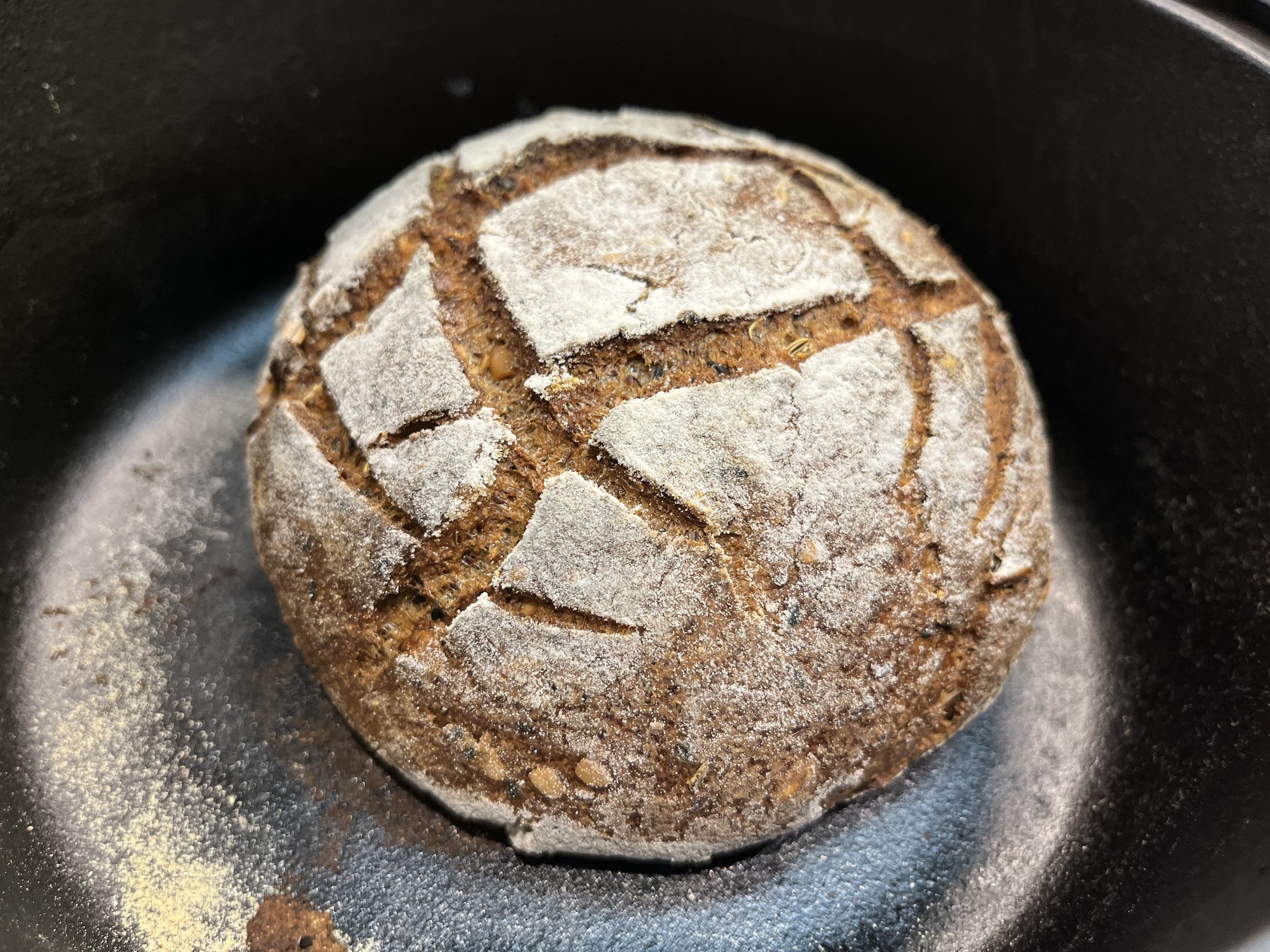Gluten-Free Sourdough German Bread


Another winner from the Facebook GF Sourdough Bread Group CC#1 and I recently joined. German sourdough bread is one of my favorites so I added spices to bring out the special aroma. CC#1 and I had to bake the bread the old fashioned way in our EGG BBQ grill after losing power for 36 hours in this year’s first winter storm. The grill heated to almost 600F with a pizza stone and the bottom of the bread burned within 10 minutes. CC#1 is very fond of the burned crust but it not likely we can duplicate that. I was actually quite skeptical when the bread came out as a small lump, showing no sign of oven spring or crumb. Yet we were all pleasantly surprised with the aroma, texture, and taste of this bread.
Further adjustments: For the next experiment, I will make the following adjustments—reduce almond flour by 50% and substitute with sorghum or millet flour, and add 2 tbsp of German spices, more salt and vinegar, and reduce sugar.
The recipe below is adapted from Caliwala Erin’s Buckwheat Almond Sourdough.
Levain
20g GF starter
40g hot water (110 to 120F)
20g buckwheat flour
20g brown rice flour
5g sugar (optional for rising faster)
Whisk together starter and water, add flours, and allow to rise by at least 15-20% (1-2 hours at most). If using room temperature water, it could take 4-8 hours. I left it in cold sunroom overnight after a few hours. No harm done other than making the levain more sour perhaps.
Bread Dough
100g Levain
330g hot water (110F)
30g sugar
35g psyllium husk
90g buckwheat flour
90g almond flour
90g brown rice flour
50g ground flax seed
50g pumpkin seeds (optional addition of sunflower seeds, sesame seeds, and chia seeds)
1 tbsp German aromatic seed blend (2:2:1 fennel seeds, coriander seeds, and caraway seeds)
25g tapioca starch
10g table salt
Instructions
Mix sugar, and psyllium husk together, then add in Levain and water
Mix together the rest of the dry ingredients until fully incorporated, using extra water if needed
Slap dough to reduce cracks and cover dough with plastic for about 30-60 minutes or until you see about 15-20% rice in volume. I didn’t see any rise in volume after the dough sat there for several hours.
Shape dough by slapping it to seal cracks, using water as needed. The goal is not to remove any gas.
Place boule in clear plastic bin and cover, and allow to proof for 2-6 hours at room temperature, or overnight in fridge until dough rising at least 15-20%. I did not observe any rise in my dough.
Preheat oven with Dutch oven to 450F (a total of 30 minutes for heating the Dutch oven)
Dust surface of boule with white rice flour, score, and bake with lid on for 35 minutes
Remove lid and continue to bake at 400F for another 30-40 minutes. Don’t bake less time as the texture maybe gummy otherwise. Internal bread temperature should be around 206-208F when ready.
Notes: I baked this bread the second time, and amped up the water temperature and sugar during the proofing process. The bread came out looking great! However, I tasted it again after a recent trip to China (I froze a quarter of the bread) and found that there is still much to be desired in terms of taste and texture: 1) Bread texture lacks chew, likely due to the amount of almond flour, which can be reduced in the next iteration. 2) Need more German spice mix. 3) Bread tastes too sweet. Need more vinegar and salt. More experiments later.